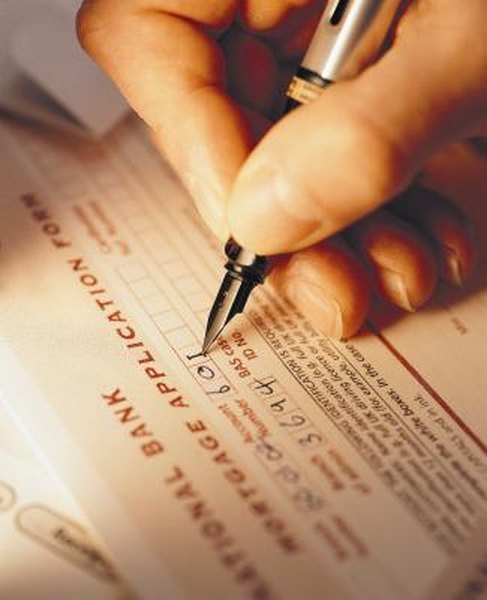How to Transfer Negative Equity to a New Mortgage
A new mortgage can help you achieve your goals.
Photodisc/Photodisc/Getty Images
When you buy a home, you do so with the expectation that your home will rise in value and positively impact your net worth. However, that does not always happen. Occasionally the value of your home moves in reverse. Negative equity occurs when the outstanding balance on your mortgage exceeds the market value of your home. Fortunately, some lenders will allow you to refinance and move that negative equity over to a new mortgage.
How to Reach Negative Equity
Perhaps you pulled money out of your home to pay for another property or finance a business. For example, you obtained a line of credit of $50,000 and have an outstanding mortgage of $300,000 on a home that originally cost $400,000. Unfortunately, that home is now worth $320,000, giving you $30,000 of negative equity. The sum of all the debts secured by your home now exceeds its value. Or your property may have plummeted in value due to a downturn in the market. Another way of saying you have negative equity is that you are upside down on your mortgage.
Home Affordable Refinance Program
You can refinance your current mortgage into another mortgage through the government-sponsored HARP, or Home Affordable Refinance Program. HARP was established by the Federal Housing Finance Agency in March 2009 to help stabilize the housing market by helping homeowners who were upside down in their mortgages refinance to lower rates or payments. This arose in response to the subprime and mortgage-backed securities debacle and resulting 2008-2009 housing crisis, which led to millions of homeowners having negative equity in their homes. Since HARP’s inception, more than 2.2 million homeowners have used it to successfully refinance. The program expires Dec. 31, 2015.
HARP Participants
Both Freddie Mac and Fannie Mae participate in HARP. You can refinance your existing adjustable-rate mortgage or higher fixed-rate mortgage into a lower, market-rate fixed-rate mortgage through this program. With both agencies you can qualify even if you owe up to 125 percent of your home’s current market value. For the Fannie Mae program, you must refinance an existing Fannie Mae mortgage. To qualify for these programs, you must have good credit and be current on your mortgage payments. In all cases the lender will do a streamlined appraisal based on the market value of homes in your area.
Federal Housing Administration Loans
If you already have a Federal Housing Administration-guaranteed mortgage on your home, you can refinance your mortgage under the FHA’s streamline refinance program, which has been in existence since the early 1980s. As with HARP, you can lower your existing fixed-interest rate or fix your adjustable-interest rate. However, the FHA streamline refinance program places no upper limit on your mortgage amount compared to your home’s value. Therefore, if your home dropped from $600,000 in value to $400,000 and you still owe $500,000, your existing FHA loan still qualifies for a streamline refinance.
References
Resources
Writer Bio
Tiffany C. Wright has been writing since 2007. She is a business owner, interim CEO and author of "Solving the Capital Equation: Financing Solutions for Small Businesses." Wright has helped companies obtain more than $31 million in financing. She holds a master's degree in finance and entrepreneurial management from the Wharton School of the University of Pennsylvania.

